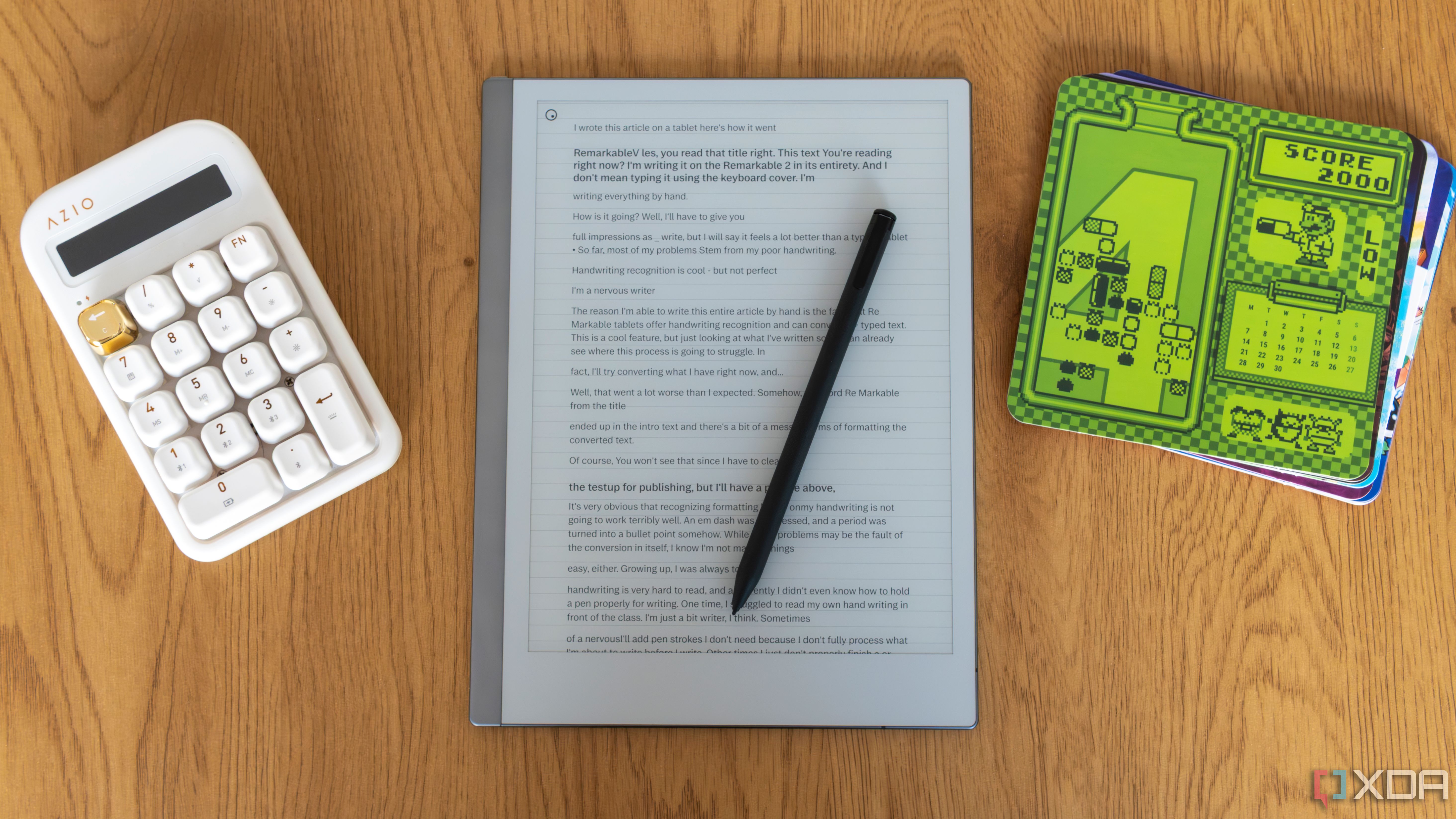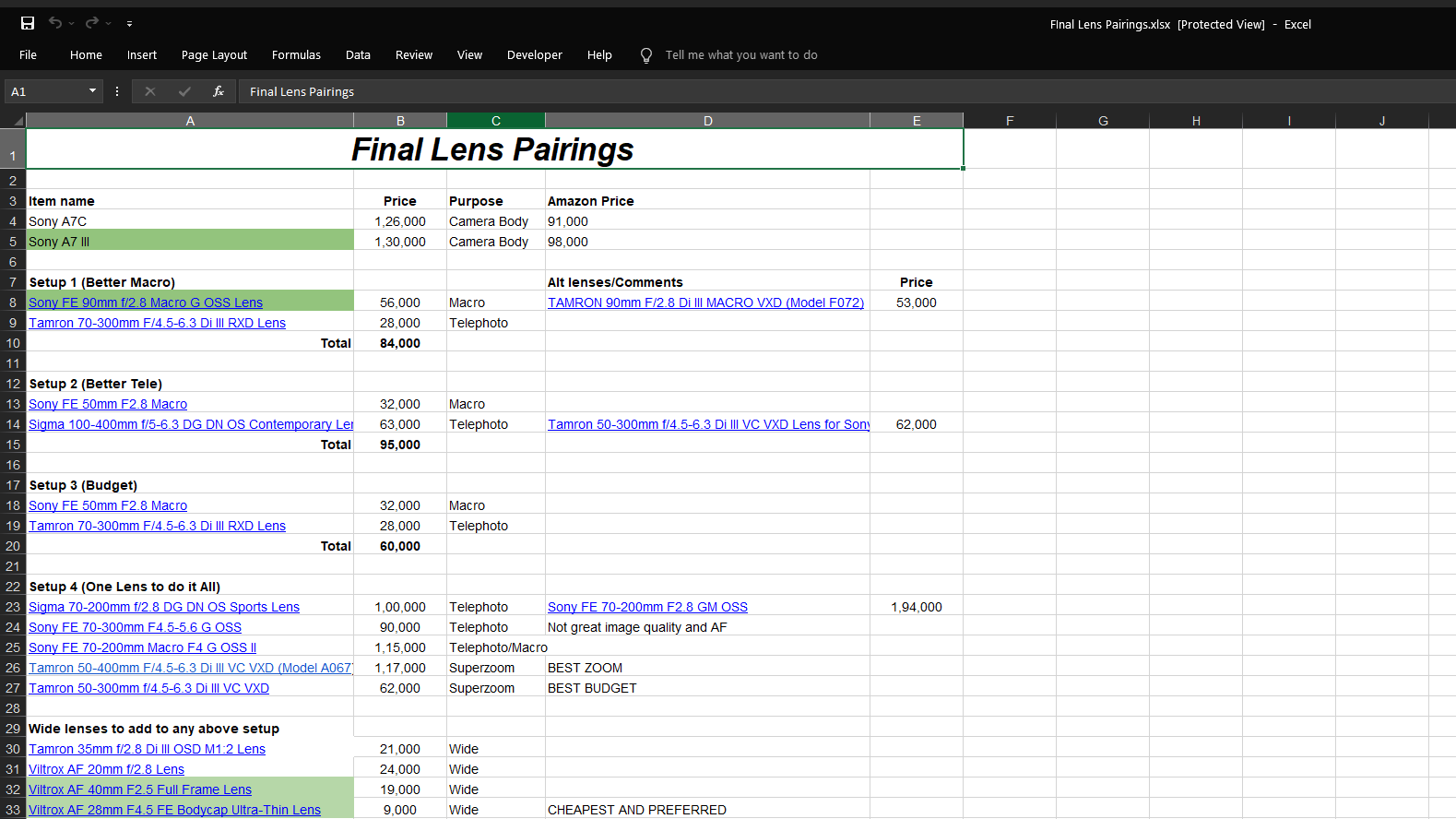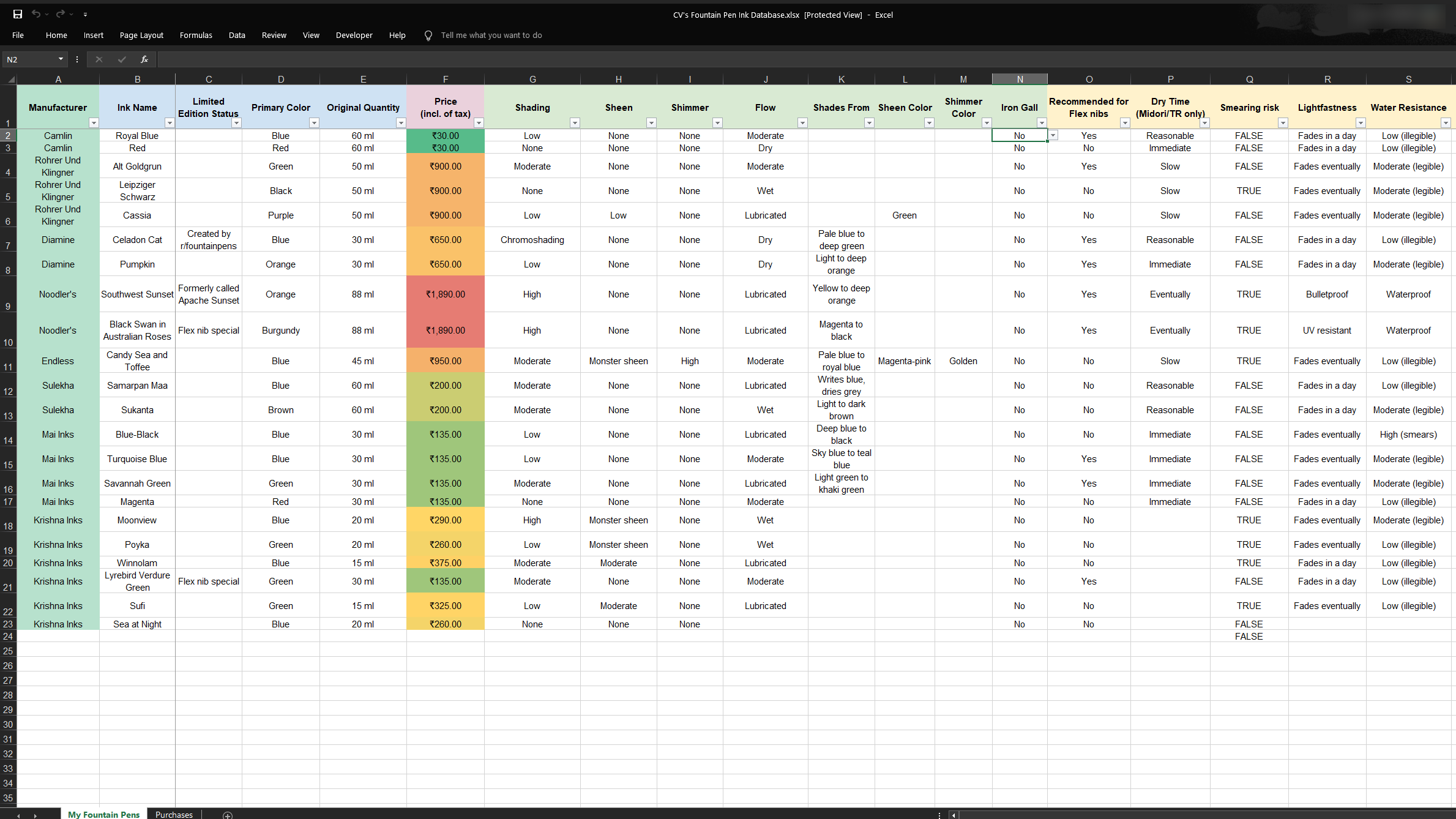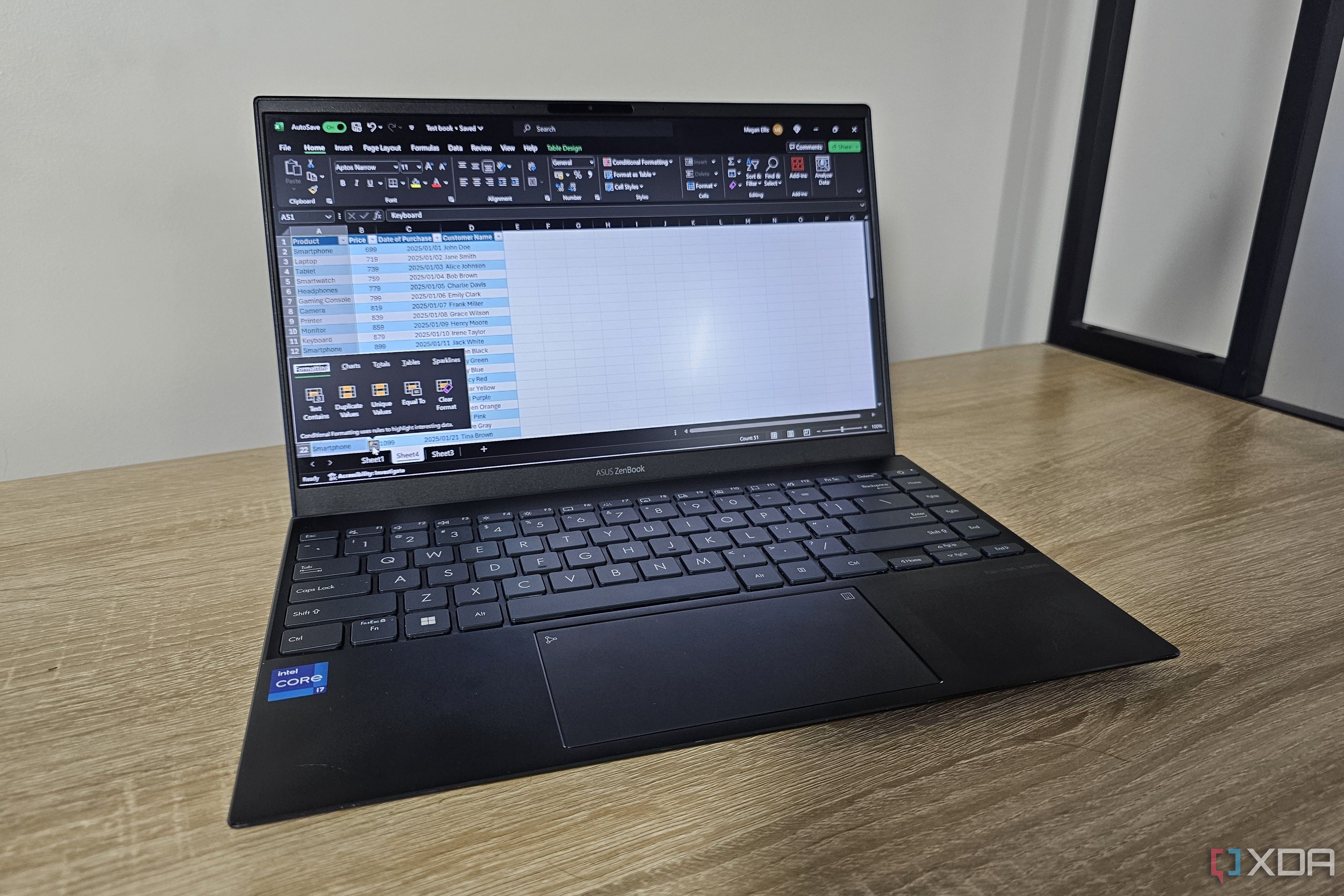Microsoft Excel might be the accountant's right hand that lives in the shadows, but it is incredibly useful for a lot more than number-crunching. I prefer using visual data management tools, such as Kanban tables on Trello, for my personal projects and hobbies. However, the sheer volume of my latest obsession has made me reconsider my aversion to Excel.
You see, most hobby management tools come in the form of expense-tracking apps or suites, as though budgeting is all there is to a hobby. Excel, on the other hand, doesn't discriminate between users, offering the same spread of tools to a hobbyist as it does to a chartered accountant. My resulting user experience trying Excel for tracking my hobbies was more than just a trip down memory lane. I had grossly underestimated the customizability and detail-oriented nature of these spreadsheets.
5 Keeping tabs on resources to stay current
Upskilling without burdening your browser

Many hobbies are recreational and relaxing, but a lot of us at XDA have a burning passion to live on the bleeding edge of what's possible with technology. As such, we try 3D printing and tinkering with the latest containers and server tricks for home labs — efforts that require constant learning with a finger on the industry's pulse. In my experience, much of this learning comes from resources online, which is what made Pocket's death greatly saddening. Leaving browser tabs open to revisit someday is just a sure-shot way to forget about them or kill your RAM, depending on the hardware you're running.
I've found Excel a great replacement for Pocket, with much smarter features as well. For every hobby I engage in, I add a sheet to the file with a template that logs learning resources I spot and intend to consume or revisit. It might seem laborious, but the concept isn't too distant from an analog reading list. Moreover, I prefer creating playlists on YouTube or in-app collections where possible, and linking directly to that collection in Excel, to ease the strain.
In Excel, I have a column for everything I would need to filter or sort the resources by — skill, type of resource, start date, completion date, percentage of completion, and ratings, where applicable. This way, I can find that hour-long material sciences lecture I wanted to finish before starting on another topic. If you like using NotebookLM for your hobbies, you can create one for each hobby and then take dedicated notes for each video you watch, to save yourself time and effort when revisiting the subject.
4 Managing events for hobbies
Plan the event with Excel

By pursuing various interests, we meet new people and forge new relationships, and meeting up in person has undeniable benefits. Through local community meetings, I got to try mechanical keyboards well beyond my financial reach, fountain pens from other countries, and even gaming consoles I did not own. However, these events require significant planning for comfortable execution. Planning an event in Excel is easier than you might imagine.
Practical applications range from budgeting for the meeting and planning gift bags for the attendees to calculating the number of attendees and tasking volunteers with key responsibilities pertinent to the event. Depending on the scale, a simple spreadsheet might also help curate guest lists with important contact information, such as emergency contacts, if you anticipate children in attendance for a puzzler's gathering.
3 Budgeting, planning purchases, and maintaining them
Make the best of your resources

Budgeting and planning a lens upgrade for my camera
In most hobbies, including those with a surprisingly affordable barrier for entry, such as calligraphy, you'll find there is no upper limit. You can learn and master the craft, but you can very well go broke learning nothing. Some of my hobbies, like photography, taught me invaluable lessons in financial restraint, and I now use Excel for what I call "hobby bookkeeping." The name is self-explanatory — Excel sheets help me keep tabs on monthly budgets, how long I've waited for specific purchases, and when I need to service or clean the items I already own.
This is arguably where Excel, well, excels. The software was built to manage numerical data, and using it for allocating a monthly hobby budget is invaluable. Yes, there are several personal finance and wealth management apps that offer similar features, but their scope is limited to the financial aspect of your avocation. With Excel, I can find my most expensive purchase in the year, tie that to how much I've used it, and perhaps even determine a fair selling price for it if I have too many similar items.
For instance, fountain pen inks are a cavernous rabbit hole, and I'll admit I have more blue ink than I need. After pulling a sample for future reference, my ink database on Excel tells me how much I bought the ink for, its price per ml, purchase date, and other properties that help determine a fair price to sell it to the next person. The converse is also true, in that Excel offers glanceable information of all the inks I have grouped by color and filtered by the desired properties, such as water resistance, to determine if I actually need another bottle. I can also sort by quantity remaining to find colors that need replenishing. If not for fountain pen inks, it's easy to extrapolate such a table for 3D printer resin or filament management, for instance.
2 Keeping inventory of my possessions
For those neck deep in a hobby

My inventory of inks for fountain pens
If you are a bibliophile or an avid collector of international currency or postage stamps, for instance, losing track of what's already in your collection has likely happened more than once. Excel helps you sort currency by denomination, country of origin, quantity, and year of mint, collectively ensuring you never acquire duplicates unintentionally at the local thrift sale. Moreover, Excel offers convenient data validation for aspects like the condition of the item, which can be a drop-down list that saves me time adding new things to the collection. Conditional formatting further helps identify the worst and best condition items if they are color-coordinated.
I also like to use Excel as a centralized database for notes about the origin story of collectibles, or for unique properties of functional items like pens and printer filament, which I may forget a few years after using them. When I store imagery and other information about my collectibles online, or know of a public repo of such data, I dedicate a column to web links. This way, I have links to the Pokédex for all the Pokémon cards I've collected, and community-curated information about their rarity and value, without cluttering up my own Excel sheet.
I haven't yet dared to do it, but valuing your entire collection based on purchase price is instantly simplified once the database is in Excel. Understandably, the purchase price has little bearing if you've spread payments over years of acquisition, or if you plan to liquidate and sell at current market prices, but AI integrations that pull data from the web could fix that in a jiffy. Inventory management easily takes the cake as the most useful way Excel helps hobbyists like me. The only chore that remains is to update the sheet.
1 Tracking ongoing builds and projects
Because something is always underway
A subset of the inventory management features Excel offers hobbyists can make it very easy to complete projects, especially if you've got multiple concurrent endeavors. I find this build tracking exceptionally useful for mechanical keyboard builds, which need parts sourced from an assortment of vendors with different delivery timelines. So, I usually give each project a new sheet in the Excel file, and a new parts bin for collecting all inbound shipments until everything arrives to start the build. I also use drop-downs and pie charts for glanceable information about how close the project is to completion.
Excel also helps identify things in the bill of materials that I may already have on hand. This is great because I can directly link to the corresponding cells in the Inventory sheet to ensure I have a sufficient quantity. Like all commercial projects, the budgeting features I mentioned earlier allow me to estimate costs and quantify budget overruns. I don't use prioritization much, but it might help some hobbyists to assign a priority or usefulness rating to their ongoing projects to fast-track their completion, especially if Excel is also used to check off the key steps along the way. Simple formulas like the one below can tell you if your project is on track or overshooting the planned completion date.
=IF(TODAY()>C2,"Overdue","On Track")
If your hobbies require frequent gear maintenance, like sporting equipment and outdoor gear, there is an additional, hidden aspect where Excel shines. Using a blend of conditional formatting and dated cells, you can set up regular maintenance schedules for critical equipment like ropes, harnesses, cables, connectors, and other hobby-specific gear. A quick glance at your inventory before you plan a project or activity will reveal which equipment is ready to take a beating and what needs to be looked at first.

Related
5 best project management tools for personal use
Manage your personal projects like a pro with these handy productivity tools
Stay on top of your hobbies
Google Sheets and other alternatives may be convenient, but Excel is still one of the best offline data management tools for the scale of most hobbies. Yes, I agree, the initial effort of sifting through your physical belongings to digitize the inventory will be a mammoth task, but I urge you to try using Excel for managing the next avocation you undertake. It could convince you sufficiently to make all those back-dated entries, just like I did.
.png)












 English (US) ·
English (US) ·